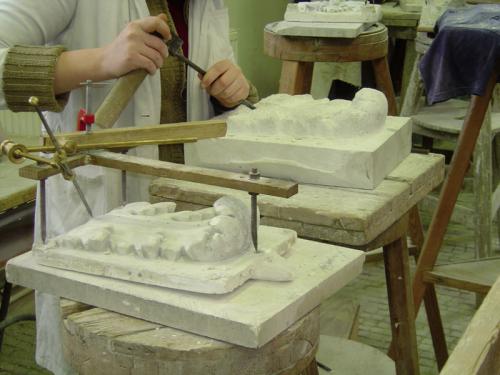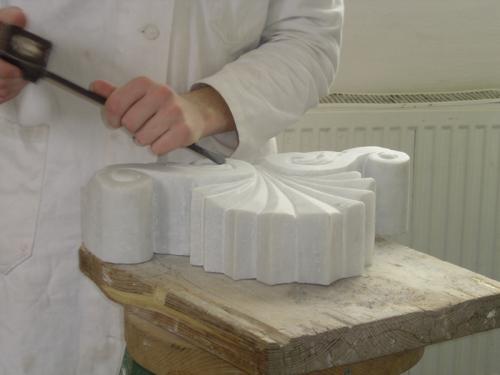One distinguishing quality about Central Europe that never fails to impress foreigners is the traditional emphasis on technical training. One reason the world is so enthusiastic about the economic possibilities of the countries that have entered the European Union only two years ago, is not just the lower labour costs, but the generally very high quality of manpower. This technical training is not something that was imparted to the population in the last few decades, there is a long tradition of it. No matter what be the industry or the country, in all kinds of towns, big or small, one can find training schools, even now financed by the state, and very active even now. One such school, surely the doyen of the training institutions, is the Horice Stonemason Training School, located in Horice, about 100 km north east of Prague.
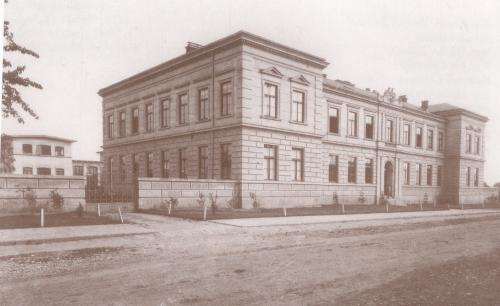
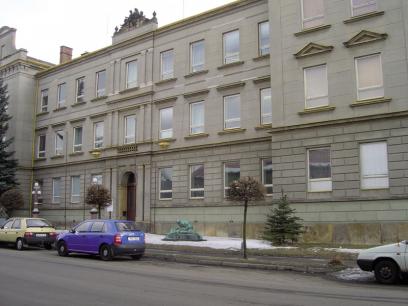
The Horice School in 1891 and in 2006
A first time visitor to the Horice School is usually awed. It is a majestic building; this school began as long ago as 1884, at the time of the Austrian-Hungarian Empire when Prague and Vienna were the centre of culture and industry.
Why was the school set up in Horice, is an obvious question. The reply too is fairly obvious, for in Horice can be found a good sandstone, very good to work with, resistant to rain and bad weather, an excellent material for sculpture. This sandstone is called Horice sandstone.
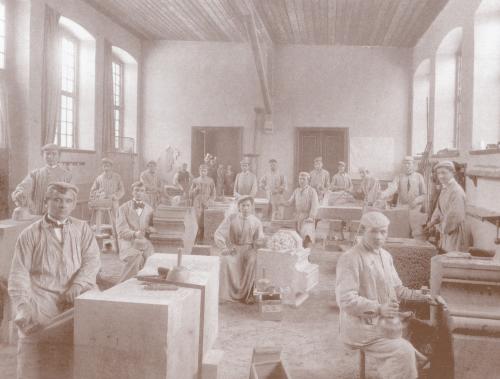
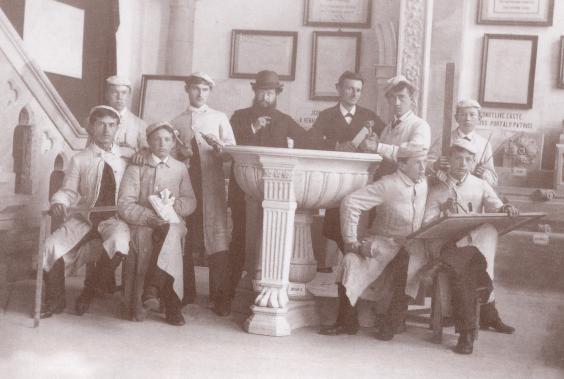
Today the school imparts training to 170 students. One fourth study sculpture, another quarter study restoration of statues, a quarter specialise as stonemasons, and another quarter explore mining using machines. The courses last 4 years at the end of which a technical degree (ABITUR) is given. Almost all the students are from the neighbouring region which has a population of 500,000 people, and the ratio of boys to girls in the school is 50:50. Entrance age is about 19, though sometimes students enter the school at a later age after having worked in factories.
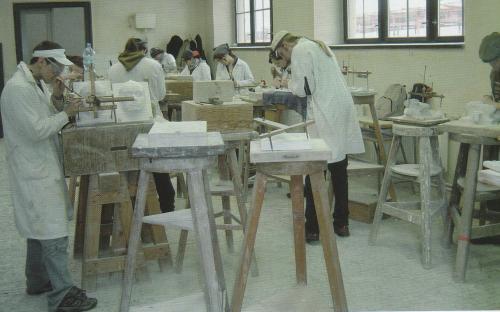
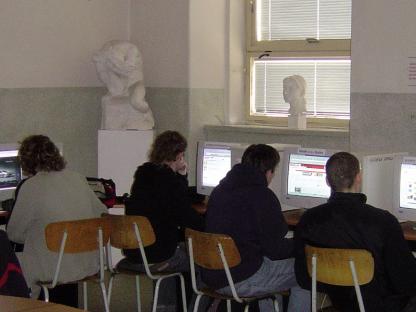
The Horice School in 2006
The main objective of this school is to prepare students to manage stone, preparing them to be able to do sculpture. The school has been doing this for a 100 years now and it teaches the students how to restore sculpture.
Even though the Czech stone industry is small and not a fast growing one as would be the case in some other countries such as Turkey or Brazil, the students apparently have no problems finding jobs once they finish the 4 year course. There are 140 stone processing companies in the region and they seem to absorb all the graduates without any problem. It seems the small companies are still growing in size.
But the school too is facing the pressures of internationalisation, if not globalisation. As the Director of the Training School, Mr Josef Moravec, says, before the students were all Czechs, there are currently one or two students from Poland and Ukraine, but next year about 10 students are expected from Poland. There is also a program in which 60 Vietnamese technicians will be honing their skills in this school.
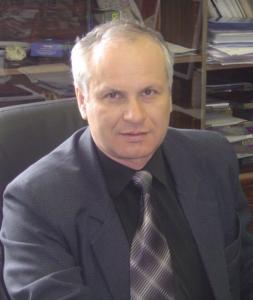
Mr. Josef Moravec, Director of the Training School
But with cheap stone sculptures from China invading the market, are not the prospects for the students affected too? According to Mr Moravec, there is always a market for specialised statues in the Czech Republic. There are clients who want for their gardens or special buildings something unique, personalised sculpture, not just a copy and that is what the students are doing.
How is the school financed? It is the state which finances everything. The student education is free, not only for Czechs but also those from other countries in the European Union. (The Vietnamese will be paying).
Regarding collaboration with training schools in other countries, unfortunately there seems to be little of this. Germany and Austria have their own schools and there seems to be some reluctance to collaborate with the Czechs. These is good collaboration however with the Poles, though nothing with Hungary, not even Slovakia.
One of the unique, priceless patrimony of the school accumulated over a century are the plaster models, there are 2,500 of them, of the most unique designs. In fact the room where these models are stored is not open to everyone.
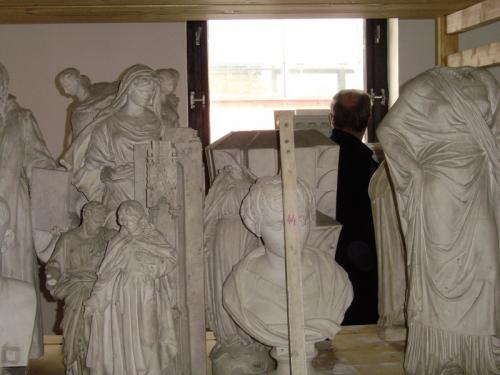
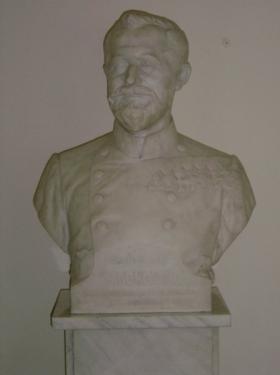
The forces of globalisation, however, march on relentlessly. While the school has made some changes to adapt to the new reality, one gets the impression, more drastic changes are in store, and, perhaps, in the not so long term. The stone industry is changing fast, and in this globalised era natural stone from all over the planet is bought and sold and installed everywhere. The Czech Republic will not be immune to this trend, and the needs of the industry will change too. The huge patrimony of the past means there will always be a need for skilled technicians for restoration of statues in the Czech Republic. But it is a matter of time before the stone companies ask for qualified people in sophisticated installation techniques, as the country gets wealthier, the stone companies will install more CNC machines and ask for trained workers to manage these machines. Of one thing there should be no doubt- the Horice Training School, with a proud tradition of over a century, in a country which places big emphasis on education and training, will know what to do in the new world and will do it right.
